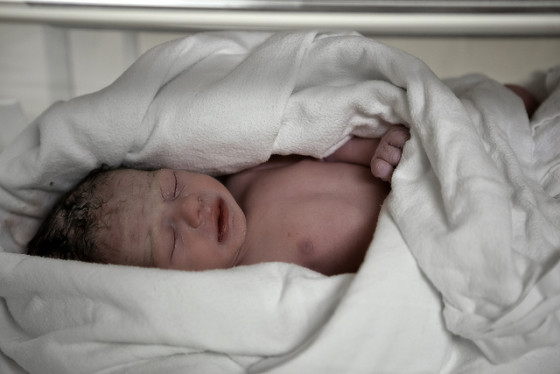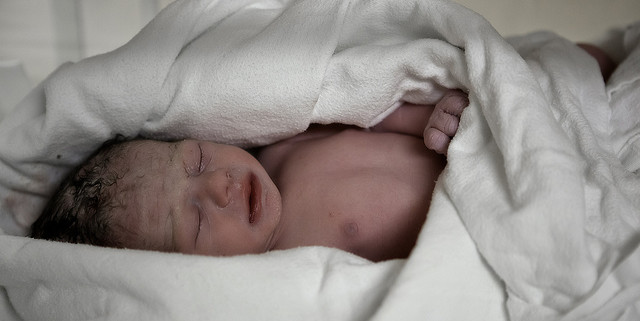C-Sections: Everything You Need To Know

Contents
What Is A C-Section?
A c-section, short for “cesarean section,” is a surgical procedure in which the doctor makes an incision through your abdomen and uterus and delivers the baby through that opening rather than through the birth canal. You’ll need anesthesia, but you typically won’t have to be unconscious. A nerve block or epidural is enough. Once you’re numb, the whole process takes just a few minutes. The incision may be made on the bottom of your belly so that any scars will be hidden by your underwear or swimsuit bottoms. In some cases, your doctor may need to make a vertical incision down your belly to get to the baby.
Once the incision is made, the doctor will suction out the amniotic fluid and pull the baby out. Then she’ll cut the cord, remove the placenta, and stitch up the incision. You’ll have absorbable sutures in the wall of your uterus that will naturally disintegrate as the incision heals and either stitches or staples on your belly for the external incision. You’ll spend a few days in the hospital recovering and it’ll take at least a month for you to get back to 100% – it takes time for the incision to heal. Whether you deliver vaginally or through a c-section, your body will need time to readjust and recover from the toll pregnancy takes on your body.
When a baby is born vaginally, the pressure in the birth canal squeezes the fluid and mucus out of the baby’s lungs. That doesn’t happen during a c-section, so your doctor will suction out the baby’s mouth and lungs to make sure they’re clear and the baby can breathe easily.
Why Would I Need A C-Section?
In certain circumstances, an emergency c-section is necessary to get the baby out as quickly as possible. Throughout your labor, your doctor will monitor your baby’s vital signs. If those signs start to stray outside the healthy range, it’s an indication of fetal distress. That can cause a number of potential health problems, including meconium aspiration and oxygen deprivation, which can cause brain damage. Babies may become stressed during delivery if the labor is particularly long and difficult or because of other underlying health concerns. A c-section may also be necessary if your labor lasts for a long time and you become too tired to push effectively or if the strain of labor causes your uterine wall to tear.
Sometimes, health conditions of the mother or the baby make a vaginal delivery particularly risky and you and your doctor may decide to schedule a c-section to avoid those risks. Conditions that may make a c-section a safer option include:
- Maternal health conditions such as high blood pressure or heart disease – labor stress can exacerbate these conditions
- Active herpes outbreak or HIV-positive status – both viruses can be transmitted to the baby during the trip through the birth canal
- Breech presentation – vaginal delivery may be impossible if the baby is in the wrong position
- Placenta previa – vaginal delivery can cause life-threatening bleeding
- Macrosomia (high birth weight) – a very large baby may not fit through your pelvis and birth canal
- Certain fetal health conditions – the stress and strain of delivery may be dangerous if your little one isn’t healthy
In general, you and your doctor may also decide to schedule a c-section if labor will put your health or your baby’s health at risk.
Finally, some mothers elect to have a c-section because they prefer it to labor. Labor is painful and can strain your pelvic floor muscles, increasing the risk of incontinence. Some people also want to be able to choose their baby’s birthday. If you’re interested in an elective c-section, you’ll need to talk to your OB-GYN about the options and the risks.
C-Section Risks And Complications
C-sections are extremely common – anywhere from 20-33% of babies in the US are delivered via c-section – and complications are rare. However, a c-section is a major surgical procedure and it does come with certain risks. First, some people react poorly to anesthesia. Secondly, like all surgeries, c-sections can lead to bleeding and infections. In addition, surgery increases your risk for forming blood clots, especially in your extremities and lungs, which can cause tissue damage or even lead to a stroke. You’ll need to follow your surgeon’s post-op procedures very carefully to make sure you’re taking proper care of the incision site and keeping the rest of your body as healthy as possible. Finally, a c-section increases your risk for uterine tears if you attempt a vaginal delivery in a future pregnancy.
In addition to the risks to the mother, a c-section carries certain risks for the baby. Babies delivered by c-section are at a higher risk for transient tachypnea, a type of breathing problem caused by fluid left in the lungs. It usually goes away on its own within a day or two, but your doctor will monitor your little one for signs of further problems.
The Bottom Line
A c-section is major surgery, but it’s done to protect you and your little one. Talk to your doctor about potential complications that may affect your delivery and about the circumstances under which you’re willing to have a c-section. However you deliver, remember to take care of yourself while you recover – your body needs a break!
If you did have a c-section and you or your little one suffered injuries a result, you may have legal remedies available to you. Contact the Safe Birth Project to learn more about your rights and options.
Image Credit and License








Leave a Reply
Want to join the discussion?Feel free to contribute!